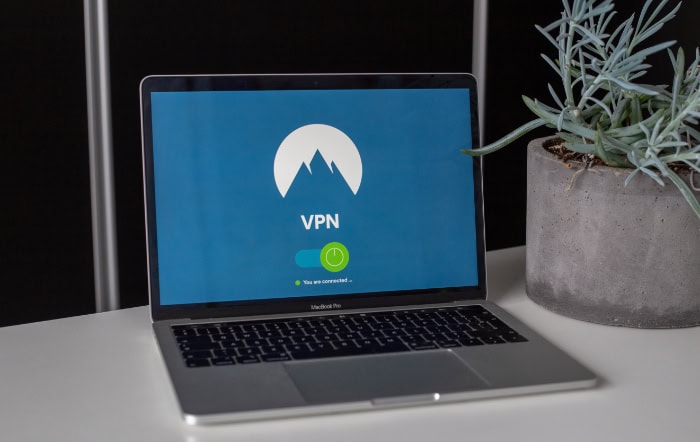What Is DNS Spoofing? The Silent Cyberattack Explained

Every time you type a web address into your browser, the Domain Name System (DNS) quietly works behind the scenes, connecting you to the website you want to visit. But what happens when this seemingly straightforward process is hijacked? That’s where DNS spoofing comes into play—a deceptive cyberattack that manipulates DNS records to lead unsuspecting users to malicious destinations.
This tactic poses a silent but severe danger, allowing attackers to steal sensitive data, spread malware, and compromise trust in online systems. For anyone living in a digital-first world, knowing how DNS spoofing works and how to guard against it is no longer optional.
How DNS Works
The Domain Name System (DNS) plays a vital role in the functioning of the internet, acting as a bridge between human-friendly domain names and the numerical IP addresses that computers use to locate and communicate with each other. Without DNS, we’d be stuck memorizing strings of numbers instead of simple web addresses, making online navigation cumbersome and inefficient.
By performing its translation role quickly and seamlessly, DNS ensures smooth internet communication that feels instant to the user.
Role of DNS in Internet Communication
Every time you type a website address like “example.com” into your browser, DNS springs into action, retrieving the corresponding IP address that allows your device to connect to the desired website's server. Think of DNS as the internet’s “phonebook.”
Just as a phonebook matches names to phone numbers, DNS matches domain names to IP addresses. This system eliminates the need for users to remember lengthy, complex numerical addresses like 192.168.1.1.
Beyond convenience, DNS also plays an essential role in maintaining global connectivity, ensuring websites are accessible regardless of a user’s location. As a distributed and hierarchical system, DNS efficiently handles billions of requests daily, making it one of the most critical components of internet infrastructure.
DNS Resolution Process
The process of converting a domain name into an IP address is known as DNS resolution, and it involves several key steps and components working in harmony. When a user enters a web address into their browser, the request is sent to a DNS resolver.
The DNS resolver acts as an intermediary, tasked with finding the IP address linked to the domain name.
If the resolver doesn’t already have the answer stored in its cache, it begins a query process. First, it contacts the root DNS server, which points it in the direction of the appropriate Top-Level Domain (TLD) server based on the domain’s extension (e.g., .com, .org).
The resolver then consults the TLD server, which provides information about the domain’s authoritative DNS server.
The authoritative DNS server is the final stop in the process. It stores the actual DNS records for the domain and sends the correct IP address back to the resolver, which, in turn, passes it along to the user’s browser.
The browser can then use the IP address to establish a direct connection to the web server and load the website.
Caching plays a critical role in speeding up this process. Both DNS resolvers and browsers store responses temporarily in their caches, reducing the need to repeat the full resolution process for frequently visited sites.
This not only improves performance but also alleviates the load on DNS infrastructure.
In essence, DNS operates as a highly efficient system that allows people to access websites by name while ensuring computers communicate in the technical language of IP addresses. However, its openness and reliance on trust also make it vulnerable to attacks like DNS spoofing, which exploit this very process for malicious purposes.
DNS Spoofing Explained

DNS spoofing is a deceptive cyberattack that manipulates the functioning of the Domain Name System (DNS) to redirect users to fraudulent or malicious websites. By interfering with the translation process that converts domain names into IP addresses, attackers can trick users into believing they are visiting legitimate websites when, in reality, they have been sent elsewhere.
The ultimate goal of DNS spoofing is to mislead users for malicious purposes, such as stealing sensitive information, spreading malware, or causing widespread disruption.
What makes DNS spoofing especially dangerous is its stealthy nature. Users typically have no immediate way of knowing they have been redirected, as the fraudulent websites often mimic legitimate ones.
This not only violates trust but also has the potential to cause significant harm to individuals and organizations alike. To fully grasp the severity of this attack, it’s important to break down the different methods used to carry it out.
DNS Cache Poisoning
DNS cache poisoning, also known as DNS cache pollution, is one of the most common methods used in DNS spoofing attacks. It involves injecting false DNS records into the cache of a DNS resolver.
Caches store query responses temporarily to speed up access to frequently visited websites, but their vulnerability lies in the trust they place on incoming data.
Attackers exploit this trust by sending malicious responses with incorrect IP addresses. If the false records are accepted and stored by the resolver, anyone querying that domain name will be redirected to the attacker-controlled address until the cache is cleared.
This tactic allows attackers to target multiple users simultaneously and remain undetected for an extended period, making it an especially effective strategy.
Man-in-the-Middle Attacks
In a man-in-the-middle attack, cybercriminals intercept the communication flow between a user and a DNS server. Acting as a silent intermediary, they manipulate the DNS response on its way back to the user, ensuring that the browser receives incorrect information.
This type of spoofing allows attackers to redirect users to malicious websites in real-time, all while maintaining the appearance of normalcy. The intercepted connection may also be exploited to collect sensitive data, such as login credentials, payment information, or other details entered on the false website.
Because the manipulation occurs during the communication process, these attacks can be challenging to detect without advanced security measures.
DNS Server Hijacking
DNS server hijacking takes manipulation to a higher level by directly compromising the DNS server itself. Attackers gain unauthorized control over the server, enabling them to alter its DNS records at will.
This approach bypasses the need for intercepting queries or poisoning caches, as the changes occur at the source.
By hijacking a DNS server, attackers can redirect all traffic for a specific domain—or even multiple domains—to their malicious websites. This method is particularly destructive and can affect entire organizations or regions by disrupting their access to online resources.
In some cases, hijacked servers are also used for broader activities, such as distributing phishing campaigns or spreading malware.
DNS spoofing, in its various forms, poses a serious threat because of its ability to manipulate the fundamental structure of internet communication. It’s not just about redirecting users—it’s about eroding trust in the very systems people rely on for secure and reliable access to online services.
Risks and Impacts of DNS Spoofing

DNS spoofing is not just a technical inconvenience; it has far-reaching consequences that can affect individuals, businesses, and even national security. Through the manipulation of DNS records, attackers gain the ability to steal information, spread dangerous software, and damage the reputation of victims on a large scale.
The ripple effects can go well beyond personal loss, undermining trust in internet systems and creating vulnerabilities that can be exploited for other malicious purposes.
Data Theft and Phishing
One of the most alarming risks of DNS spoofing is its ability to facilitate large-scale data theft. By redirecting users to fake websites that closely mimic legitimate ones, attackers can harvest sensitive information such as usernames, passwords, credit card numbers, and other personal data.
Often, these malicious sites are nearly indistinguishable from the original, making it easy to deceive even cautious users.
This tactic is commonly used in phishing campaigns, where unsuspecting users willingly enter their information into what they believe is a trusted platform, such as an online bank or popular e-commerce site. Once the attackers obtain this data, it can be used for financial fraud, identity theft, or sold on the dark web, amplifying the impact of the breach.
Malware Distribution
DNS spoofing also serves as a gateway for distributing malware, ransomware, and other malicious software. When redirected to attacker-controlled websites, users may unknowingly download harmful programs disguised as legitimate files.
These downloads can occur through fake software updates, fraudulent advertisements, or compromised installers.
Once installed, malware can perform various harmful actions, such as stealing additional data, corrupting files, or granting attackers ongoing access to the infected system. In cases of ransomware, attackers may encrypt the victim's data and demand payment for its release.
The damage caused by such infections can cripple individuals and businesses alike, disrupting operations and causing financial losses.
Reputation Damage
Organizations targeted by DNS spoofing can encounter a different kind of harm—damage to their reputation. When customers or clients are redirected to malicious websites through a spoofed DNS that uses the organization’s brand, it creates a perception of insecurity.
Victims often blame the organization for failing to protect their data, even when the attack originates outside the organization’s control.
Rebuilding trust after a spoofing incident can take years and necessitates significant effort and expense. For businesses, this loss of trust can result in declining customer loyalty, reduced revenue, and long-term harm to their brand image.
For governments or public institutions, similar breaches can lead to public criticism, reduced confidence in their ability to safeguard critical infrastructure, and even political consequences.
Broader Implications
DNS spoofing doesn’t always target individuals or businesses. It can also serve broader agendas like censorship or surveillance. Malicious actors, including state-sponsored organizations, may manipulate DNS records to limit access to certain websites, promoting propaganda or restricting free speech.
This enables authoritarian governments to control what their citizens can and cannot see online, effectively weaponizing DNS spoofing for mass restriction and information suppression.
Additionally, internet service providers (ISPs) or rogue organizations may exploit DNS spoofing to monitor user behavior, intercept private communications, or redirect traffic to monetized platforms without user consent. These broader uses of DNS spoofing highlight the significant risks it poses to internet freedom and user privacy on a global scale.
The impacts of DNS spoofing extend far beyond the immediate victims, affecting trust, security, and access across the online world. Recognizing these risks is essential for addressing the vulnerabilities that make such attacks possible.
How to Detect and Prevent DNS Spoofing

DNS spoofing attacks can be difficult to identify because they often occur silently, leaving users unaware that their internet traffic has been manipulated. Despite this, there are methods to detect unusual activity and implement measures to protect against such threats.
Staying vigilant about potential warning signs and adopting protective technologies are crucial steps in minimizing the risks associated with DNS spoofing.
Detection Techniques
One of the first steps in identifying DNS spoofing is monitoring DNS traffic for unusual patterns or behaviors. Unexpected redirects, sudden spikes in DNS queries, or responses that point to unfamiliar IP addresses can be indicators of an attack.
These anomalies often suggest that a DNS resolver or server has been tampered with.
Threat intelligence tools can also play a critical role in detecting DNS spoofing. These tools actively scan DNS servers and domain records for evidence of compromise, identifying suspicious changes or redirects before they cause significant damage.
Security teams can use these tools to stay ahead of attackers, identifying vulnerabilities and blocking malicious activity in real-time.
Additionally, users may notice certain signs of DNS spoofing themselves, such as being redirected to websites that look suspicious or encountering warning messages about invalid SSL certificates. These indicators shouldn’t be ignored, as they often point to potential spoofing attempts.
Preventive Measures
Preventing DNS spoofing begins with strengthening the infrastructure that manages DNS queries. One of the most effective solutions is DNSSEC (Domain Name System Security Extensions).
DNSSEC enhances DNS security by adding cryptographic authentication to DNS responses, ensuring that users receive accurate and trusted information. By digitally signing DNS records, DNSSEC makes it significantly harder for attackers to alter or spoof data.
Securing DNS traffic itself is another critical measure. Implementing encrypted protocols like DNS over HTTPS (DoH) or DNS over TLS (DoT) adds a layer of protection by encrypting DNS queries, preventing attackers from intercepting or manipulating them during transit.
These protocols protect user privacy while making it much more difficult for attackers to execute man-in-the-middle attacks.
Frequent updates to operating systems, DNS servers, and other software components are vital for patching vulnerabilities that might otherwise be exploited by attackers. Cybercriminals often target outdated systems, making regular maintenance an important part of maintaining DNS security.
Best Practices for Users
While much of DNS spoofing prevention falls on organizations and infrastructure providers, individual users can also take steps to protect themselves. Avoiding suspicious links and manually verifying website URLs before entering sensitive information is one of the simplest yet most effective habits.
Recognizing slight abnormalities in website addresses or inconsistencies in design can help users identify malicious sites.
Using trusted VPN services can also enhance overall safety by encrypting internet traffic and providing additional protection against DNS-based attacks. Furthermore, keeping browser extensions minimal and ensuring antivirus software is active and updated can reduce the chances of accidental exposure to spoofing attempts.
Ultimately, a combination of vigilant monitoring, advanced security technologies, and user awareness is essential to detect and prevent DNS spoofing. This layered approach reduces vulnerabilities and ensures safer interactions across the internet.
Conclusion
DNS spoofing exposes critical weaknesses in the systems that keep the internet functional and secure, making it a serious concern for individuals and organizations alike. The potential impacts, from data theft and malware distribution to reputational harm and censorship, highlight the need for vigilance and strong defenses against this threat.
By adopting measures like DNSSEC and encrypted protocols, maintaining updated systems, and monitoring for unusual activity, organizations can significantly reduce their exposure to DNS spoofing attacks. On an individual level, practicing caution when browsing online and staying alert to suspicious behavior can make a meaningful difference.
Strengthening defenses against DNS spoofing not only protects sensitive information but also helps preserve trust in the internet as a dependable tool for communication, commerce, and everyday life.


